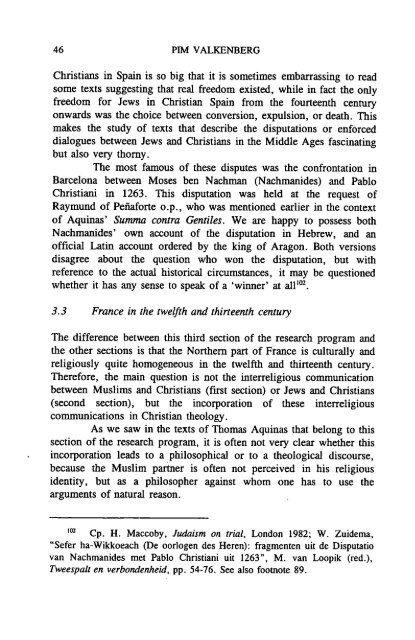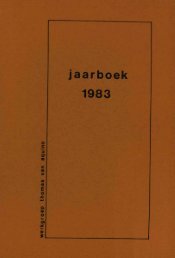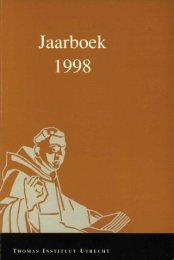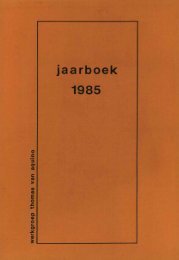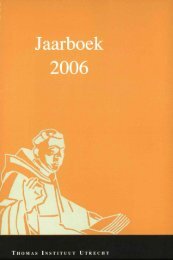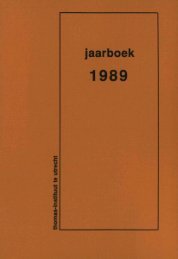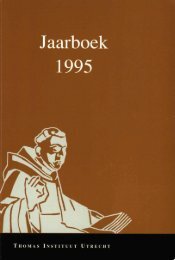Jaarboek Thomas Instituut 1997 - Thomas Instituut te Utrecht
Jaarboek Thomas Instituut 1997 - Thomas Instituut te Utrecht
Jaarboek Thomas Instituut 1997 - Thomas Instituut te Utrecht
You also want an ePaper? Increase the reach of your titles
YUMPU automatically turns print PDFs into web optimized ePapers that Google loves.
46 PIM VALKENBERG<br />
Christians in Spain is so big that it is sometimes embarrassing to read<br />
some <strong>te</strong>xts suggesting that real freedom exis<strong>te</strong>d, while in fact the only<br />
freedom for Jews in Christian Spain from the four<strong>te</strong>enth century<br />
onwards was the choice between conversion, expulsion, or death. This<br />
makes the study of <strong>te</strong>xts that describe the disputations or enforced<br />
dialogues between Jews and Christians in the Middle Ages fascinating<br />
but also very thorny.<br />
The most famous of these dispu<strong>te</strong>s was the confrontation in<br />
Barcelona between Moses ben Nachman (Nachmanides) and Pablo<br />
Christiani in 1263. This disputation was held at the request of<br />
Raymund of Peüafor<strong>te</strong> o.p., who was mentioned earlier in the con<strong>te</strong>xt<br />
of Aquinas' Summa contra Gentiles. We are happy to possess both<br />
Nachmanides' own account of the disputation in Hebrew, and an<br />
official Latin account ordered by the king of Aragon. Both versions<br />
disagree about the question who won the disputation, but with<br />
reference to the actual historical circumstances, it may be questioned<br />
whether it has any sense to speak of a 'winner' at alI102•<br />
3.3 France in the twelfth and thir<strong>te</strong>enib century<br />
The difference between this third section of the research program and<br />
the other sections is that the Northern part of France is culturally and<br />
religiously qui<strong>te</strong> homogeneous in the twelfth and thir<strong>te</strong>enth century.<br />
Therefore, the main question is not the in<strong>te</strong>rreligious communication<br />
between Muslims and Christians (first section) or Jews and Christians<br />
(second section), but the incorporation of these in<strong>te</strong>rreligious<br />
communications in Christian theology.<br />
As we saw in the <strong>te</strong>xts of <strong>Thomas</strong> Aquinas that belong to this<br />
section of the research program, it is of<strong>te</strong>n not very clear whether this<br />
incorporation leads to a philosophical or to a theological discourse,<br />
because the Muslim partner is of<strong>te</strong>n not perceived in his religious<br />
identity, but as a philosopher against whom one has to use the<br />
arguments of natural reason.<br />
102 Cp. H. Maccoby, Judaism on trial, London 1982; W. Zuidema,<br />
"Sefer ha-Wikkoeach (De oorlogen des Heren): fragmen<strong>te</strong>n uit de Disputatio<br />
van Nachmanides met Pablo Christiani uit 1263", M. van Loopik (red.),<br />
Tweespalt en verbondenheid, pp. 54-76. See also footno<strong>te</strong> 89.


